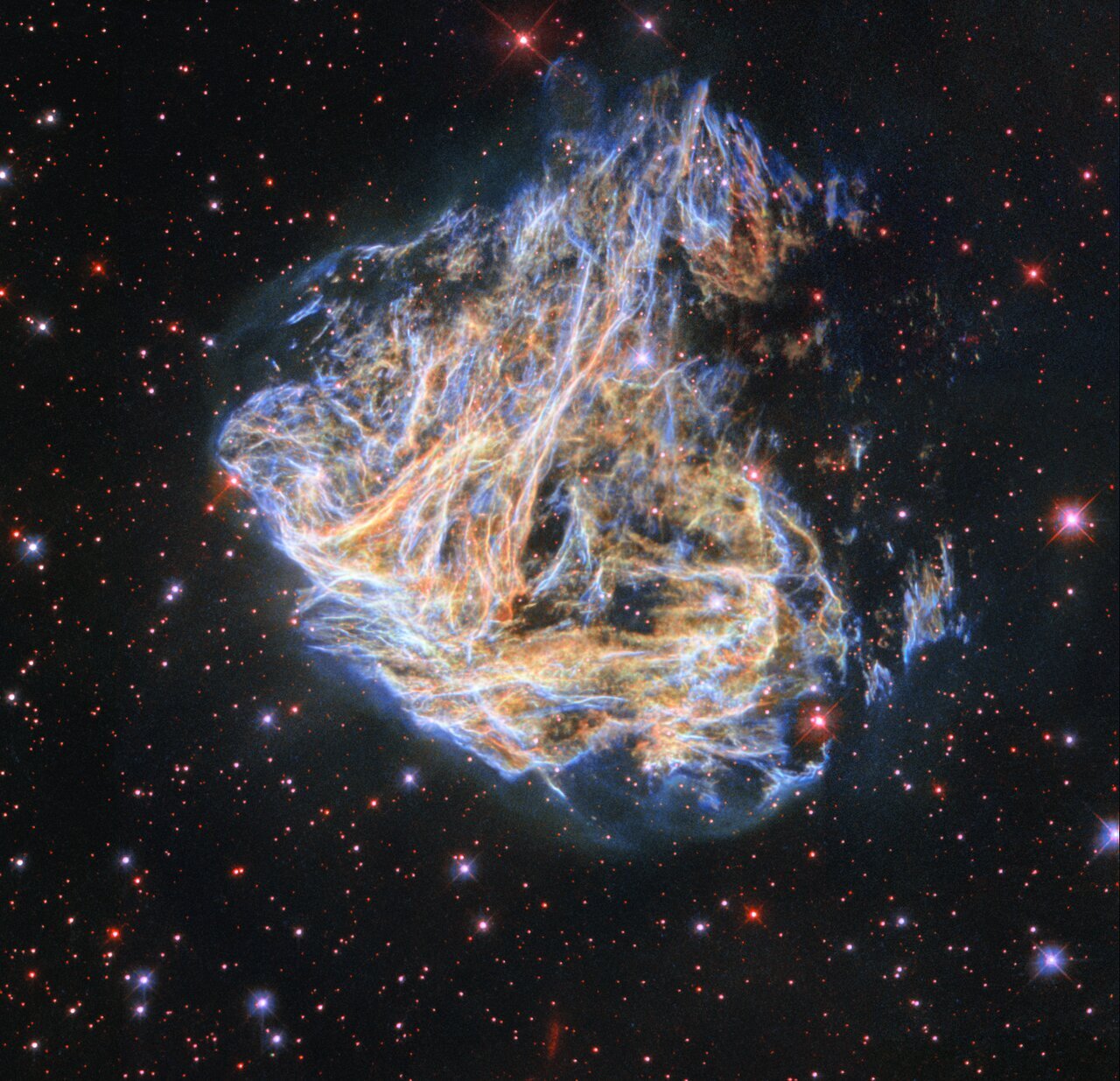6.12.2022
The supernova remnant is located in the Large Magellanic Cloud, a Milky Way satellite galaxy, and hides a rapidly spinning neutron star.

The colorful, wispy remains of a star's violent death glow like fireworks in a spectacular image captured by NASA's venerable space telescope.
Located in the Large Magellanic Cloud, a satellite galaxy of the Milky Way, the debris forms delicate sheets and intricate filaments of orange and blue. The stunning strands in the Hubble Space Telescope image are the remnants of a supernova, a powerful explosion triggered when a massive star reaches the end of its life.
Called DEM L 19 or LMC N49, the stellar remains are located around 160,000 light-years from Earth, in the constellation Dorado, and represent the brightest supernova remnant within the Large Magellanic Cloud, Hubble scientists wrote in a statement.
The light from this explosion would have washed over Earth thousands of years ago, and the sheets and fine ropes of material that the supernova left behind will eventually become the building blocks of the next generation of stars in the Large Magellanic Cloud.
The 75-light-year-wide supernova debris cloud wasn't all the blast left behind, however. Scientists believe that this glowing cloud of material hides a rapidly spinning neutron star created when the core of the exploding massive star collapsed under the tremendous inward pressure of its own gravity.
This neutron star's mass is around that of the sun or greater, but it's condensed into the area of a city; it's so dense, in fact, that a teaspoon of the material within the neutron star would weigh 4 billion tons (3.6 billion metric tons). The ultradense stellar object is spinning once every 8 seconds, and its magnetic field is around a quadrillion times stronger than Earth's magnetosphere.
Astronomers discovered this neutron star in 1979, when it blasted out a dramatic, high-energy gamma-ray burst. Since then, it has emitted several more gamma-ray bursts, meaning it is now classified as a "soft gamma-ray repeater." Rapidly spinning neutron stars with strong magnetic fields blasting out radiation such as this one are also known as pulsars.
The new image was created using data from two separate investigations of DEM L 19, one of which involved the Hubble Space Telescope's now-retired Wide Field Planetary Camera 2. The aim of this first investigation was to study how supernova remnants interact with the interstellar medium — the tenuous dust between stars — in the Large Magellanic Cloud. In particular, the team wanted to know how small clouds of gas and dust cause the supernova remnant to evolve and change its structure.
The aim of the second investigation was to study the gamma-ray repeater hidden within the cloud.
This isn't the first time that a stunning image of DEM L 190 has been presented to the public. In 2003, scientists released a Hubble image showing the supernova remnant as puffs of smoke and sparks.
The new image improves on the previous image by incorporating additional data and by taking advantage of advanced image processing techniques, leading to an even more eye-catching photo.
Quelle: SC
